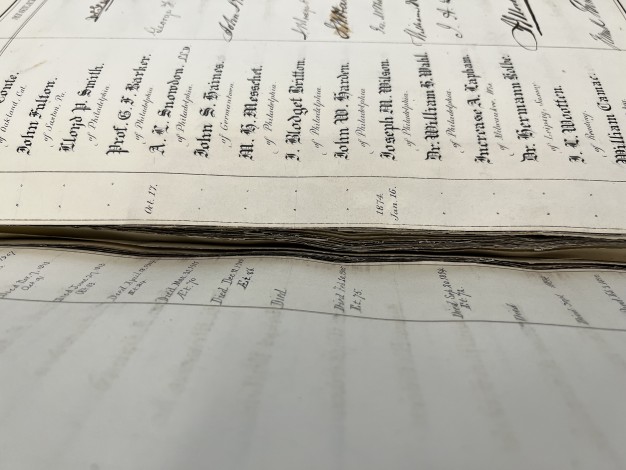Condition Issues Stack Up: Iron Gall Ink in the First APS Roll Book of Members
Two previous blog posts by Anisha Gupta and myself shared the problems with iron gall ink, which was used for almost all the manuscripts in the Western world from around 400 CE to the late nineteenth century. While the ink can be dark and permanent, it is also acidic and attacks paper at the molecular level. If it contains excess iron, it can also catalyze oxidation of the paper under and adjacent to the ink. Symptoms of this deterioration include brown haloes around the ink, splits within the inked areas, and eventually the dropout and loss of the inked parts of the paper.
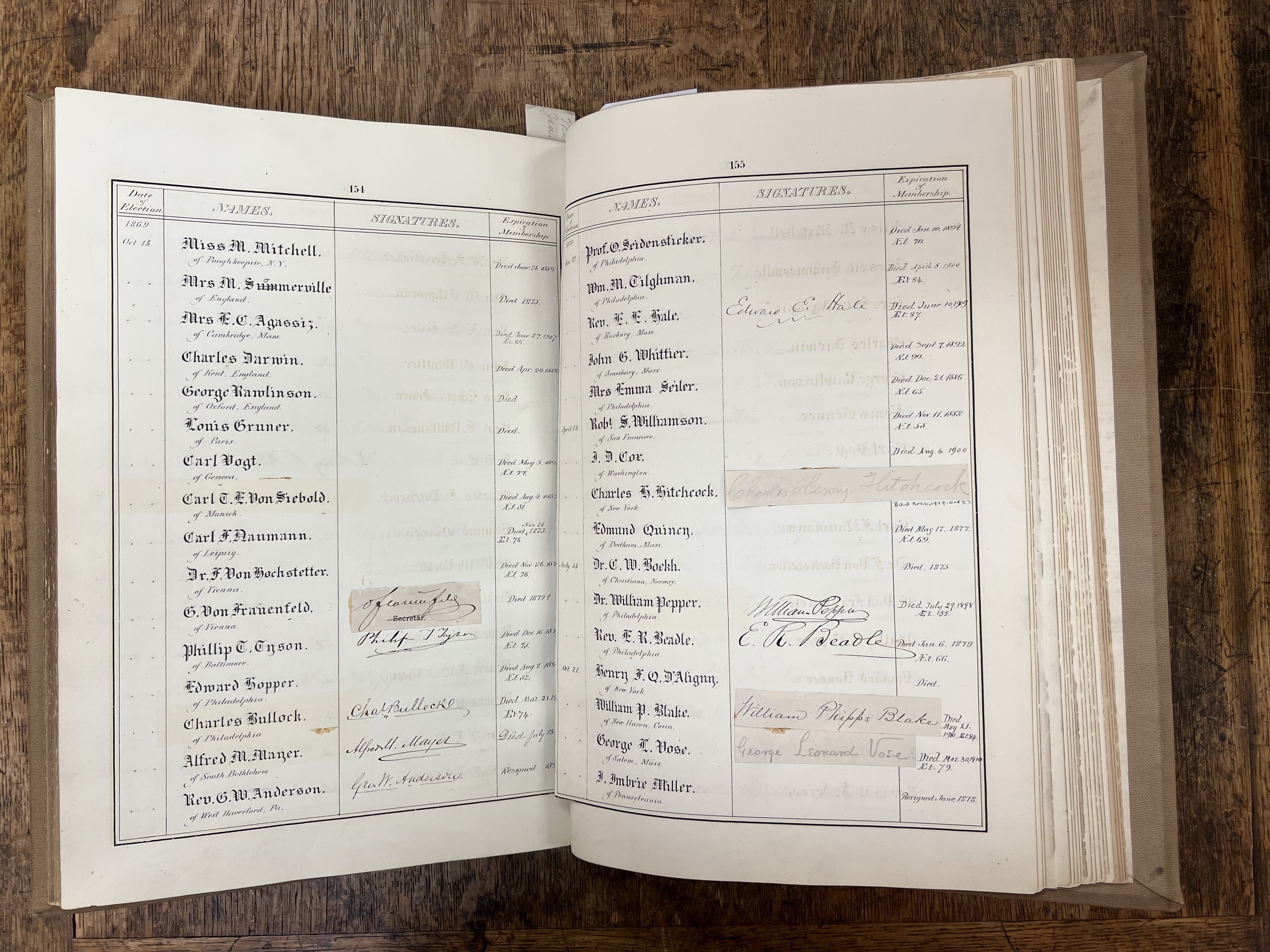
In preparation for the 2023 APS Museum exhibition on women in science, I recently examined the American Philosophical Society’s first roll book of Members, which provides an excellent example of the hazards of iron gall ink. While the roll book lists APS Members from Benjamin Franklin, who established the first version of the Society in 1743, to Clarence H. Clark, who was inducted in 1889, it was actually begun in 1837. Calligrapher William Fite assembled 93 leaves of beautiful, thick handmade wove paper bearing the watermark of the J. Robeson paper mill in Philadelphia. He then inscribed a title page, the Laws of the American Philosophical Society, and a list of all the APS Members admitted up to that date. He ruled each of the 136 pages for listing Members’ names with a frame made from double inked lines—one outer, thicker line and one inner, thinner line—making for a dramatic formal presentation.
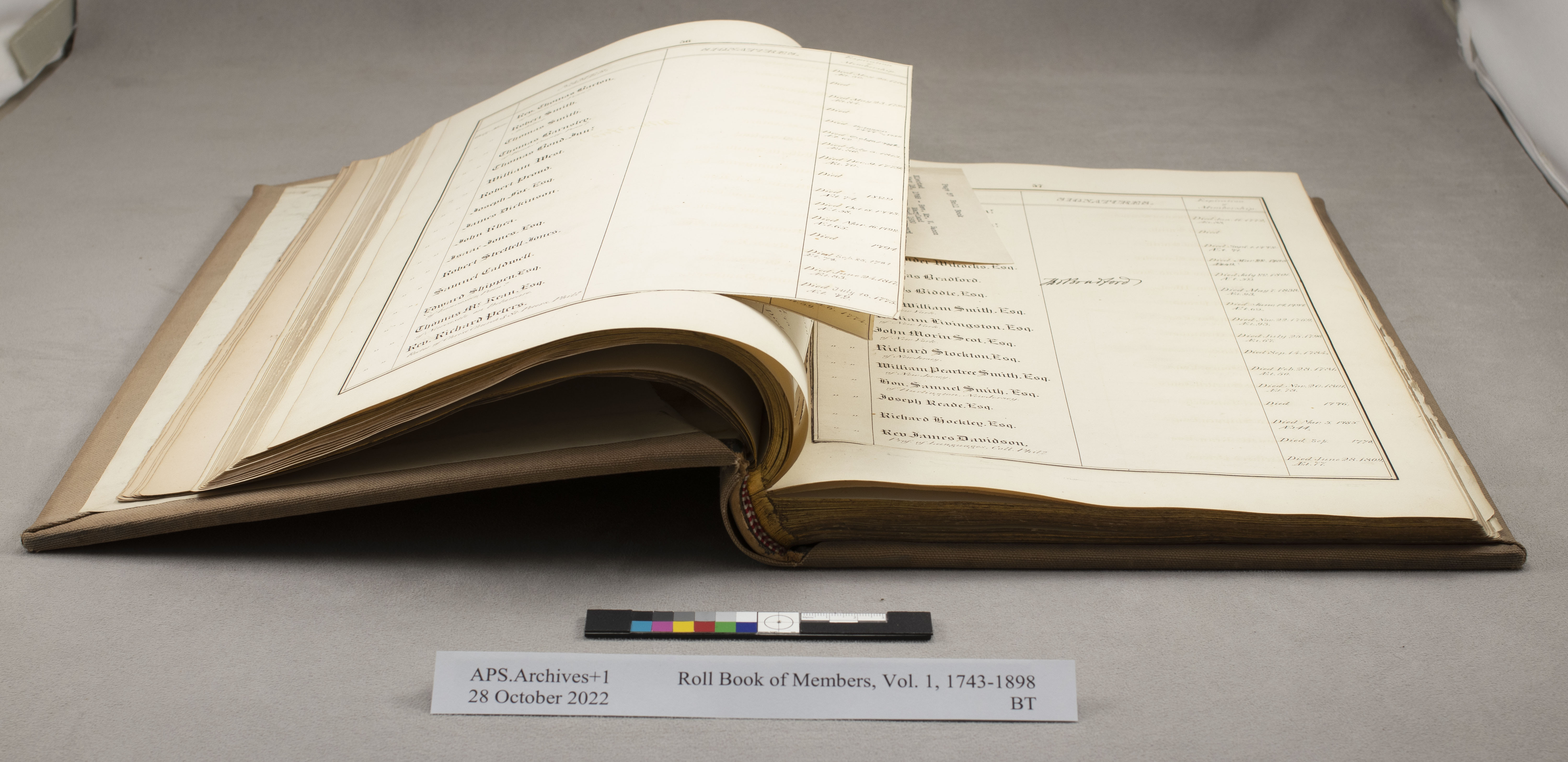
Once Fite had finished his work, a binder took the inscribed leaves and bound them into an ornate green leather binding with gold tooling all over. To keep the leaves together, he adhered a stub of heavy paper to the spine side of each leaf, and then whip-stitched the leaves together through the stubs. This means that the book does not open very flat, and the leaves must flex dramatically about an inch from the gutter—exactly where Fite inscribed his thicker vertical ruled line. When I opened the book for the first time, I was in for a surprise. More than a third of the ruled leaves have split along that vertical rule.
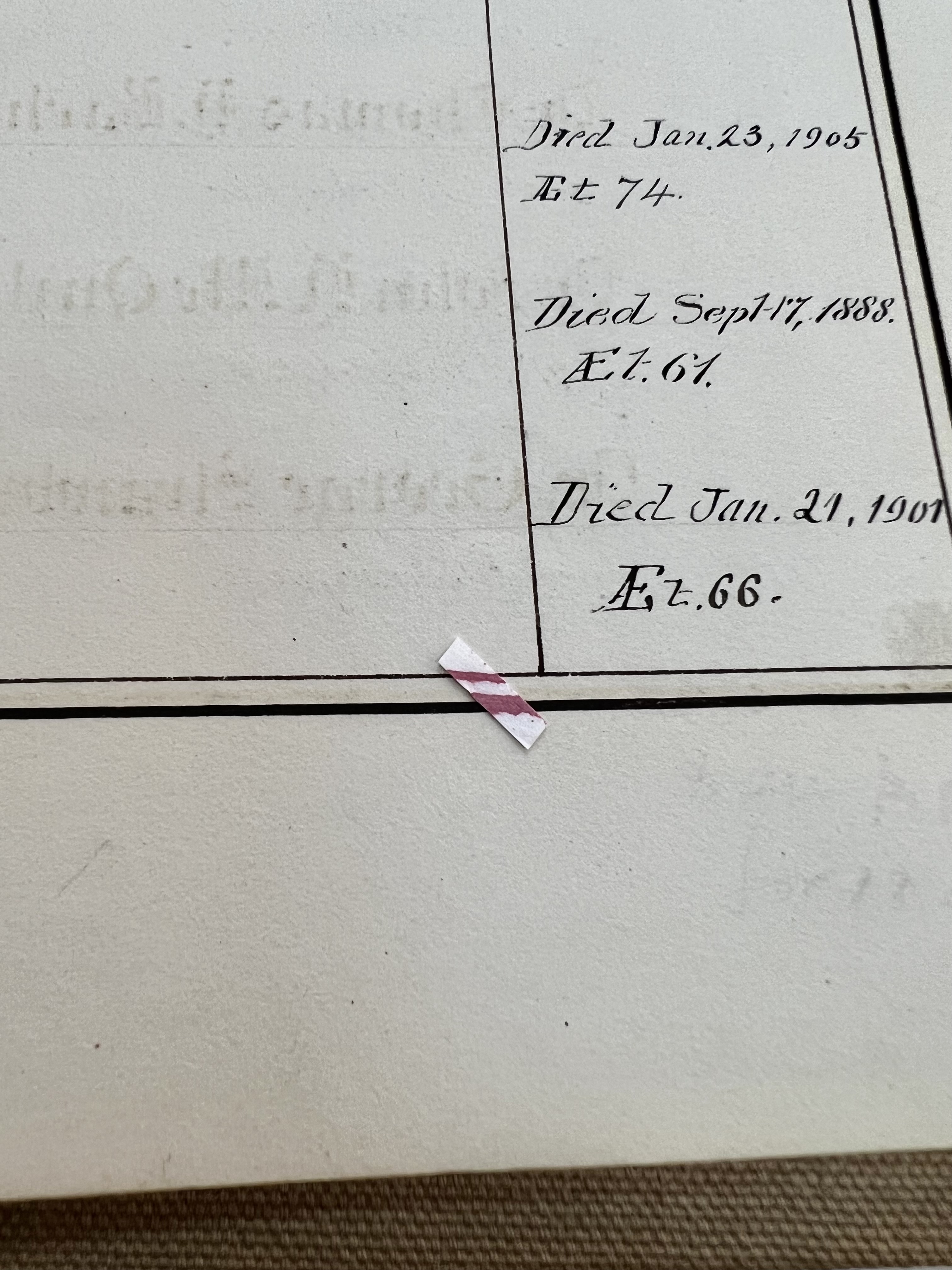
To see what role the chemistry of the ink might have played in this damage, I tested the ruled lines with a strip of bathophenanthroline-impregnated paper. Bathophenanthroline is a non-bleeding dye that turns bright pink when it is dampened and placed in contact with material containing free iron(II) ions. Often it takes a few minutes for the pink coloration to turn up and reveal a positive result, but in the case of the roll book, the test strip turned instantly magenta when I pressed it to the inked lines. Fite’s iron gall ink is extremely reactive! Still, I’m not sure it would have cracked through the paper as it has without the additional mechanical stresses caused by the binding. The other ruled lines are intact and show no signs of weakness.
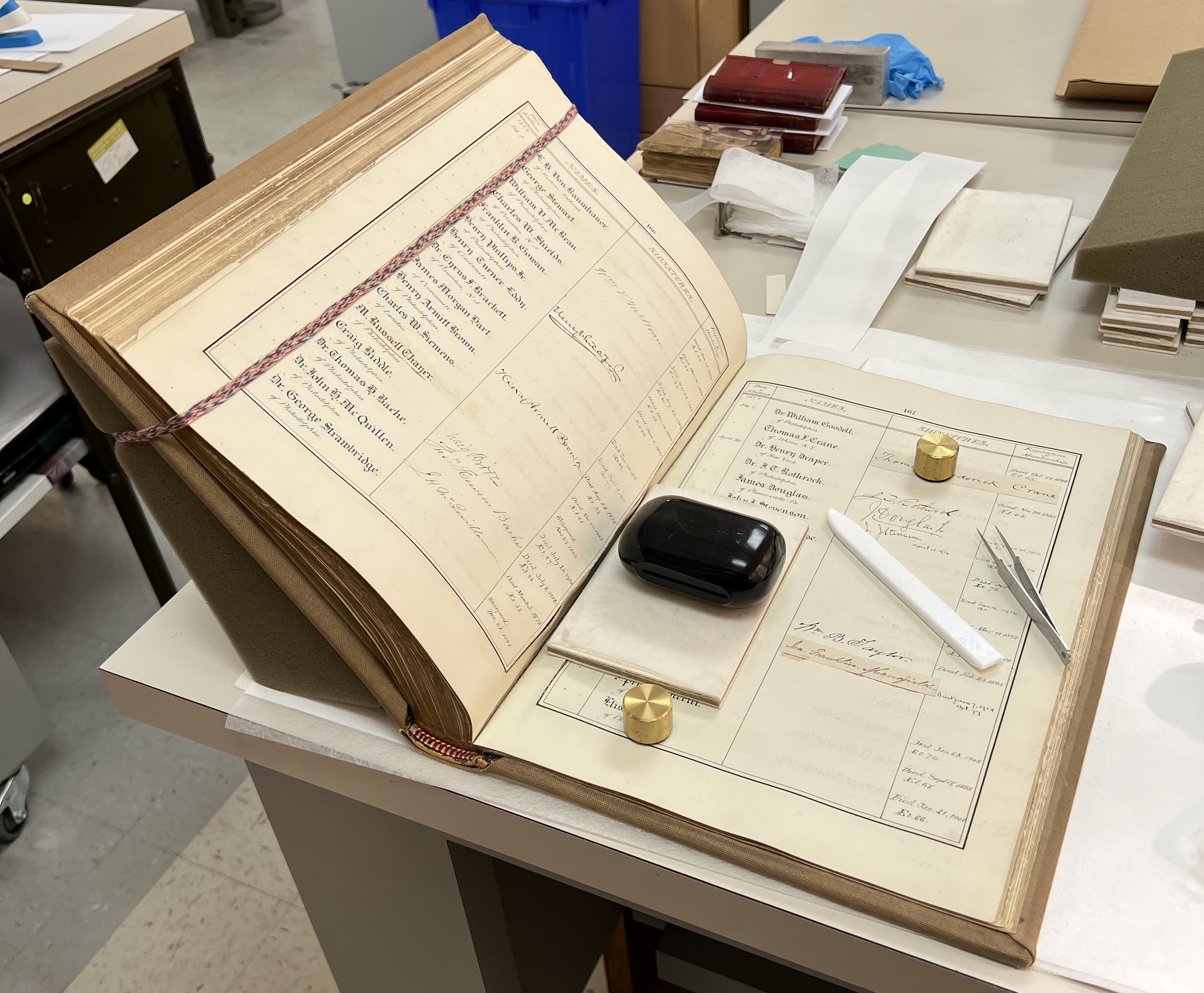
At first I was sure I would have to disbind the volume and add additional paper to the spine edge of each leaf, which would move the point of flexion away from the ruled lines and into the gutters of the pages. This would deprive the volume of its historical binding, however. I was delighted to discover that most leaves could be successfully mended with Asian paper that had been pre-coated with adhesive and then allowed to dry. Re-moistening the adhesive with purified water makes it tacky again, but less wet than freshly applied paste. This is important when mending iron gall ink, as the free iron ions that make the ink so reactive also bleed into the surrounding paper when it’s wet, blurring crisp ink lines and spreading out the area of deterioration. If treatment progresses as planned, the book can be exhibited in its original binding and original format, with the names of four women scientists inducted in 1869 and 1870—Maria Mitchell (astronomer), Mary Sommerville (astronomer and mathematician), Elizabeth Cary Agassiz (natural sciences), and Emma Seiler (anatomist of the larynx)—prominently displayed.


